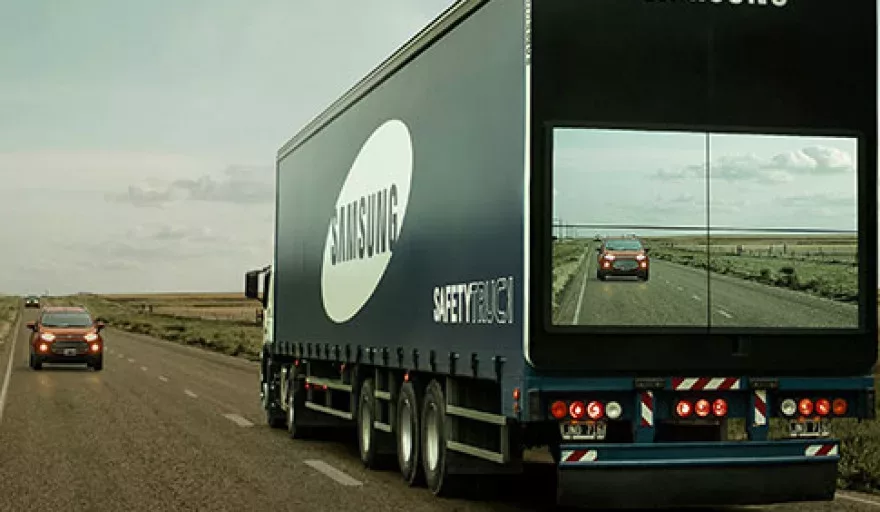The South Korean electronics giant, Samsung, has revealed that it is working on a prototype to make overtaking lorries much easier for the average car.
The ‘Safety Truck’ prototype mounts a wireless camera to the front of the large vehicle and livestreams the footage onto a giant wall of four video screens projected onto the back of the trailer. This means that if find yourself stuck behind a truck, you’ll have a clear, real-time view of oncoming traffic.
Based on the 2009 Russian design house Art Lebedev’s ‘Transparentius’ concept, the prototype camera is designed to drastically improve road safety and save lives by reducing road accidents.
According to CNN, this is not the first time a company has attempted to make ‘transparent’ vehicles with cameras. In Japan, researchers used mirrors and cameras to make a Toyota Prius see-through. Furthermore, Jaguar is working on a system that will use cameras to give drivers a 360-degree view of what’s outside the car, projecting it inside to compensate for blind spots.
Just this week, Ford has already announced a 180 degree front camera mounted behind the grill of three of its larger cars to allow drivers to see round corners and exit tight junctions and driveways without edging forward to see oncoming traffic.
Unfortunately, Samsung’s technology is just a prototype at the moment, but it is clear that the motor industry is making significant efforts and investments into researching this area. Samsung has tested is technology with one truck in Argentina, a country with the fifth highest number of car accidents in the world according to Samsung’s post on the project, so it’s a natural place to test the technology.
If the product were to become available, it is then a case of considering whether it is a worthwhile expense for the average haulage company. The camera may be cheap, but with four large displays on each truck is a major investment to consider for any transport company.
Going forward, Samsung will work with NGOs and governments to make sure the technology is properly regulated, by putting the product through its paces to comply with existing national protocols.
Image Source: Samsung Tomorrow




















